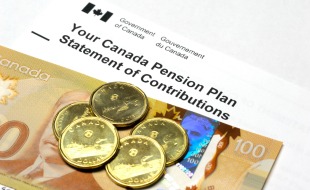

Younger Canadians are at risk of shouldering any future deficit in the expanded Canada Pension Plan if it experiences shortfalls in investment returns, according to a new report by the C.D. Howe Institute.
The institute’s report references calculations by Canada’s chief actuary, published in October 2016, that predicted the Canada Pension Plan Investment Board must earn an average real rate of return over 75 years of at least 3.41 per cent in order for the enhanced CPP to fulfil its obligations.
But in order to continually achieve the investment target, the plan might end up exposing the plan to more risk, the C.D. Howe report suggested. It noted that achieving a long-term average of at least 3.41 per cent “requires an assumed asset mix embodying a fair amount of investment risk and uncertainty. With risk and uncertainty comes the likelihood of higher or lower returns.”
Read: Actuarial report on enhanced CPP contains some interesting tidbits for plan sponsors
Unlike the current CPP, which depends on the plan’s assets and their rates of return as well as employer and employee contributions, the enhanced program is meant to be fully funded, notes Robert Brown, a professor emeritus of statistics and actuarial science at the University of Waterloo. “So you’re absolutely dependent on investment income. You’re not going to use any of your contributions, in theory, to pay benefits.”
But whether the plan will earn enough investment income to provide the enhanced benefits is unclear, says Malcolm Hamilton, a senior fellow at the C.D. Howe Institute in Toronto. “The one thing that’s clear is nobody can predict with any accuracy today how investments are going to be performing in 20, 30, 40, 50 years. The 3.4 [per cent] is an educated guess — no more, no less. And as the actual experience reveals itself, then the contribution rates and benefits will need to be adjusted to deal with the emerging reality.”
It’s also possible there will need to be adjustments to the age at which Canadians can start to claim their benefits if the enhanced plan incurs shortfalls, notes Hamilton.
Read: CPP changes do little to ensure appropriate income for future retirees
The C.D. Howe report used simulations to look at fluctuations around the assumed returns and found cash flows would be sufficient to cover 90 per cent of the benefits in just over half of the scenarios. The report also noted the lack of clarity around what would happen if there was a shortfall in funding for the enhanced CPP benefits.
“I think we need to find out soon what the adjustment mechanism will be if the train runs off the tracks,” says Brown. “If we can’t get to where we want to be with the extra [contributions], then we need to know what the adjustment mechanism is going to be. And at this point, we have no idea.”
But according to Serge Charbonneau, a partner and actuary at Morneau Shepell Ltd., the C.D. Howe report merely states facts the chief actuary already conveyed in his report about the enhancements. “We already know the facts, and maybe now it’ll need to be communicated to the general population, but not in alarmist messages,” he says.
Read: CPP enhancements receive final sign-off
“Everybody knows there’s risks involved in the CPP. These guys are putting the finger on [investment] risk, which is very well known. But there’s numerous risks involved, too,” says Charbonneau, pointing to demographic, economic and longevity risks.
Like the enhanced CPP, the current program doesn’t come with an ironclad guarantee, adds Charbonneau. He notes the chief actuary had already taken a conservative approach in his projections by factoring in uncertainties and assuming less equity and more fixed-income investments for the enhanced plan.
The C.D. Howe report recommends a target-benefit approach, with the government limiting potential increases to contributions by giving the basic portion of CPP benefits a high degree of protection and building flexibility into those above that level.
Read: CPP changes an opportunity to look at pension plan redesign
